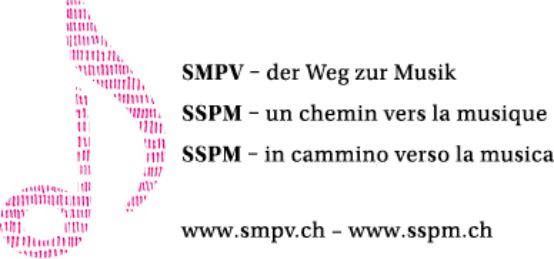Spotlight on the history of the SSPM: from 1893 to 1920

Throughout the jubilee year, we present a selection of articles recounting the 125-year history of the SSPM. After presenting the founding of the association in the March issue, here we look back at its development up to 1939.
After its foundation at the first general meeting on October 1, 1893 at the Gotthard Restaurant in Olten, the young association, originally called "Schweizerische Gesang- und Musiklehrerverein" (SGMV), initially devoted itself to promoting singing in schools and choral competitions. By 1899, the SGMV was already organizing choral conducting courses, which aroused considerable interest and received considerable support from the cantons. In 1903, for example, they were attended by 124 participants from 20 cantons. 1906 saw the launch of the first course for organists. It lasted two years, with half-day lessons for eight weeks a year. As the SGMV organ notes, the need to offer this course was unfortunately confirmed "in a painful way". For the young association, it was a period rich in initiative and marked by the pleasure of experimentation. Its professional confidence was reflected in its free-flowing contacts with the authorities responsible for public education. In 1911, 18 years after its foundation, the ongoing development of pedagogical activities led the association to adopt a new name and new articles of association: the Société suisse de pédagogie musicale (SSPM) was born. The new statutes considerably expanded the association's tasks in the field of music pedagogy, and membership was already more strictly regulated:
"The Society seeks the association of all teachers of singing and music, conductors, organists, performing artists and authors of works on music with the aim of improving music education as a whole, promoting music in public life and improving the status of the music teacher."
As a sign of this new self-confidence, Feuillets suisses de pédagogie musicale was separated from the Swiss musical review and became an independent publication. At the same meeting, the foundations were laid for the SSPM's professional training program, which began in 1913. What prompted the SSPM to expand its activities by becoming an educational institution? The intention was to improve music teaching in Switzerland, in line with the objective set out in the new statutes, and to offer its own diploma examinations for this purpose. The aim was to offer the many Swiss musicians working in their field without any formal training the opportunity to prove their skills by passing an examination and obtaining a diploma. Two meetings were all it took for the Central Committee to draft and adopt the corresponding regulations. The first SSPM diploma examinations were held in Zurich on April 26, 1913. The regulations of the time have unfortunately been lost, but it seems that the requirements were very dissuasive; out of some sixty interested parties, only five sat the exams. A registration for accordion and drum had to be refused, as experts for these instruments could not be found. Two piano diplomas, one organ diploma, one violin diploma and one conducting diploma were awarded that day. The examinations included a short recital and sight-reading, an oral and written test in theory (including harmony, musical forms and music history), and a test lesson or conducting demonstration. In practice, the award of the diploma meant that its holders were "recommended [by the SSPM] as music teachers for their respective branches". At first, the title was not officially recognized. It is difficult to form an idea of the instrumental level, but there is every reason to believe that it was at least comparable to that of the conservatories of the time; as the Central Committee emphasizes: "We take care (...) to preserve the honorability of our teachers by requiring of examination candidates everything that an ordinary music teacher should know. "For those who didn't take the exams in the end, he adds: "We hope that [you] are now convinced that you could have saved yourself the cost of ordering and us the postage!" As we can see, right from these first exams, the SSPM's aim was not to professionalize good amateurs but, in line with the new statutes, to improve music teaching both in the private sector and in schools, so that it gradually reaches a professional level.
Five years later, in 1916, the association's activities were finally extended to French-speaking Switzerland, and the French name Société Suisse de Pédagogie Musicale was written into the statutes. By this time, the association had 550 members.
At the same time, the services offered to members expanded considerably. The SSPM regularly published an employment exchange in Feuillets de pédagogie musicale, and built up a score library. Up until the 1920s, it even ran concert-organizing advice centers, designed to support members instead of professional agents or organizers. By 1919, no fewer than 80 such centers had been set up in Switzerland. The emergency fund was also an integral part of the assistance offered to members.








